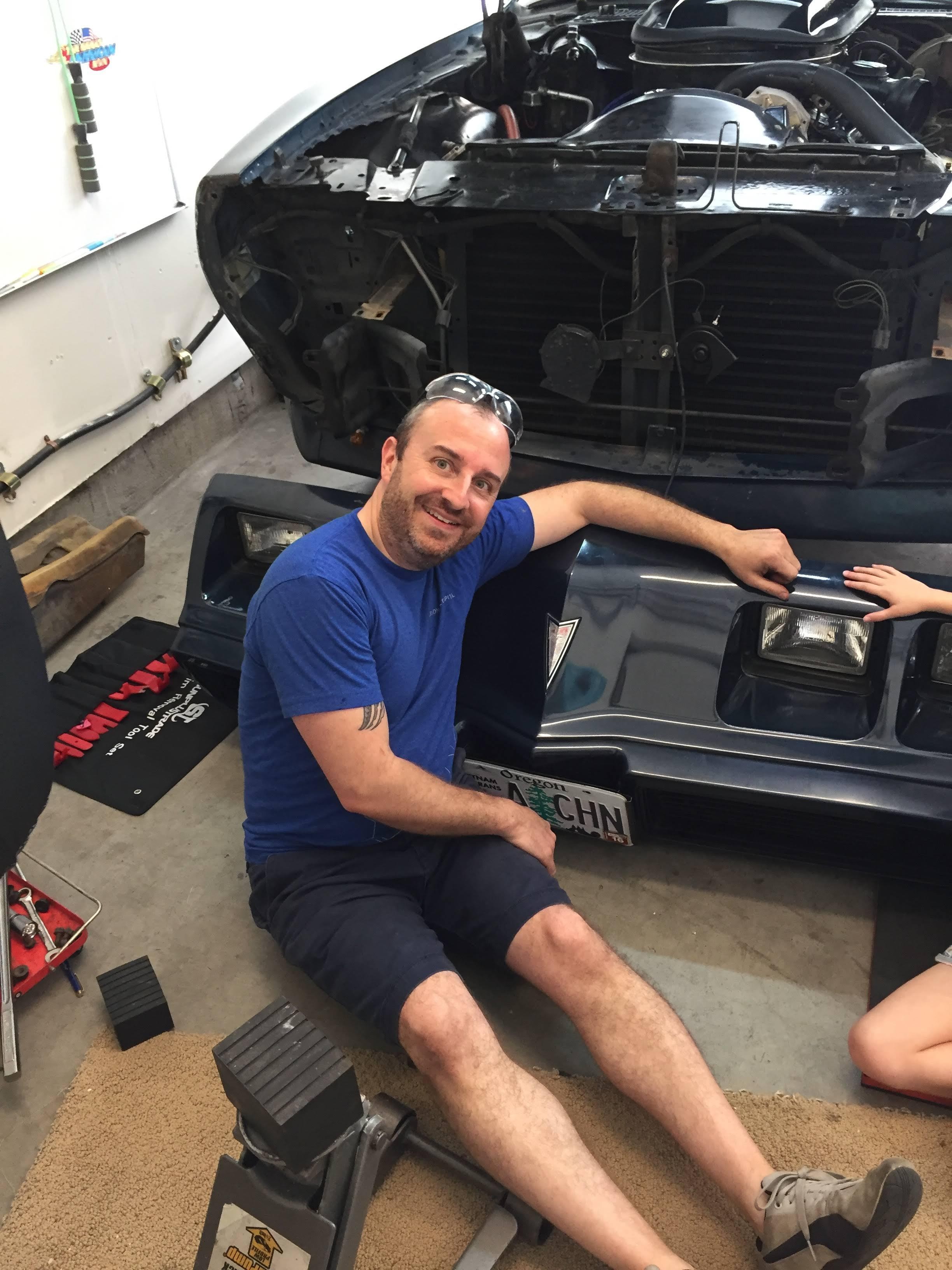For many авто enthusiasts, the Pontiac Trans Am from the late 1970s represents the pinnacle of American muscle car design. Specifically, the 1977 and 1978 models hold a special place in the hearts of car lovers. Like the author of this article, many grew up dreaming of owning one of these iconic vehicles. Finding a pristine 77 or 78 Trans Am today can be both challenging and expensive. This is where the beauty of a project car and a little ingenuity come into play.
The author, driven by a lifelong passion for the 77-78 Trans Am and a desire to share this passion with his daughter, embarked on a unique project. Instead of waiting for the perfect 77 or 78 to materialize, he opted for a solid, drivable base: a 1979 Firebird. His goal? To give this 79 Firebird the coveted appearance of the earlier, more sought-after models through a front-end conversion.
This approach makes perfect sense for those who prioritize driving and enjoying a classic Firebird now, while also appreciating the iconic styling of the 77-78 models. Starting with a 1979 Firebird offers a more accessible entry point into the world of second-generation Firebirds, often proving more readily available and potentially more affordable than the earlier Trans Ams. Furthermore, a drivable project car allows for gradual upgrades and modifications, keeping motivation high and the joy of classic car ownership immediate.
The core of this transformation lies in swapping the front end of the 1979 Firebird with components from a 1977 or 1978 model. The great news for DIY enthusiasts is that this swap is remarkably straightforward. Pontiac designed these front ends to be largely interchangeable, making it a bolt-on affair for the most part.
The author was fortunate enough to source a complete 77-78 front end assembly from Second Gen Graveyard for $500, simplifying the process considerably. However, if you’re starting from scratch, you’ll need to gather the necessary parts individually. Here’s a comprehensive list to guide your 79 Firebird to 77-78 front end conversion:
- Front bumper cover
- Front bumper foam absorber
- Front bumper reinforcement
- Front bumper headlight mount (right and left)
- Bumper mounting brackets (right and left)
- Center nose support bracket
- Front spoiler center 1977-1978 (fiberglass)
- Front spoiler side flares set 1977-1978 fiberglass with bracket pair
- Trans Am Front Spoiler Kit (center and side flares)
- Front spoiler backers (pair)
- 1978 Trans Am front grill – left hand (black)
- 1978 Trans Am front grill – right hand (black)
- Headlight support
- Front light wiring harness
- Front emblem panel crest gold
While some hardware for adapting front nose and tail lights might be listed, the author found they weren’t necessary for this particular conversion, highlighting the direct-fit nature of the swap.
The removal and installation process itself is described as relatively simple. Around a dozen bolts secure the front clip to the quarter panels and chassis. Careful removal, perhaps with diagrams or photos to remember bolt locations, is advisable. Having a friend assist in lifting off the old front end and positioning the new 77-78 assembly is highly recommended. Loose fitting of bolts initially allows for adjustments to perfectly align the new front end before final tightening. The fiberglass nose support warrants wearing long sleeves to avoid skin irritation.
While the author retained the 1979 spoilers, further enhancing the 77-78 clone look could involve swapping to 1978 spoilers. The rear bumper is another area for potential modification, though the author hasn’t tackled that aspect yet.
Alt text: Nostalgic image of the author as a child with a black and gold painted big wheel, foreshadowing a lifelong passion for Pontiac Trans Am and a future 79 Firebird project.
Alt text: Father and daughter bonding over a 1979 Firebird project car, emphasizing family involvement in classic car restoration and modification.
Alt text: Close-up view of the 1979 Firebird’s original front end before the 77-78 Trans Am style conversion, showcasing the starting point of the project.
Alt text: The donor 77-78 Trans Am front end parts sourced for the 1979 Firebird conversion, highlighting the essential components for the DIY project.
Alt text: Side profile of the 1979 Firebird undergoing front end conversion, illustrating the initial stages of transforming its appearance to resemble a 77-78 Trans Am.
Alt text: The 79 Firebird with the new 77-78 Trans Am front end partially installed, demonstrating the visual impact of the front end swap and the evolving look.
Alt text: Front three-quarter view of the 79 Firebird with the 77-78 Trans Am front end completely installed, showcasing the successful transformation and iconic styling.
Alt text: Detailed shot of the completed 77-78 Trans Am style front end on the 1979 Firebird, emphasizing the grille, headlights, and bumper integration.
Alt text: Another angle of the finished 1979 Firebird front end conversion, highlighting the seamless integration of the 77-78 components and the improved aesthetic.
Alt text: Rear view of the 1979 Firebird, suggesting potential future modifications to the rear to further enhance the 77-78 Trans Am clone appearance.
In conclusion, converting a 1979 Firebird to the 77-78 Trans Am front end style is a rewarding and achievable project for classic car enthusiasts. It allows you to enjoy a second-generation Firebird with the iconic look of the late 70s Trans Ams, often at a more accessible price point and with the satisfaction of DIY modification. This project not only revives a classic but also creates lasting memories and shared experiences, as seen with the author and his daughter working together. Whether you’re a seasoned mechanic or a budding enthusiast, this 79 Firebird front end swap offers a fantastic way to personalize your ride and pay homage to a legendary era of American muscle cars.

